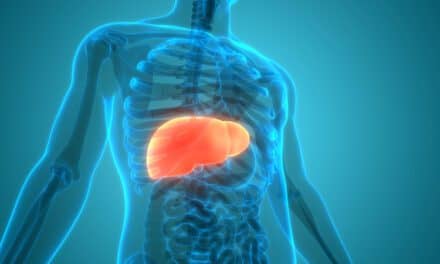Who stole the show? User-friendly solutions with a focus on interoperability, maximizing workflow and minimizing disruptions, took center stage at SIIM.

|
Seattle was abuzz with talk of high-tech trends and tools at the Society for Imaging Informatics in Medicine meeting from May 15 to 18. Radiologists, technologists, IT administrators, physicists, and company executives headed to the Washington State Convention and Trade Center to attend scientific sessions and demonstrations that discussed the latest issues. Visitors reviewed the newest innovations of approximately 140 vendors.
Exhibitors aimed to meet the demands of radiologists and IT users with tools that maximize workflow with minimal disruptions. User-friendliness was a top priority, too. Many exhibitors cited the increased amount of images that radiologists can read through new tailored solutions. Here is just a sampling of the innovations we applaud:
Debuting: Software to Speech Recognition
The advantages of a single log-on were emphasized in Agfa HealthCare’s IMPAX Clinical Applications US release, which permits users to perform complex image processing without the need for a specialized workstation. The software provides Registration-Fusion, X-ray Angio Analysis, and OrthoGon in a package that offers tight integration in Agfa’s PACS. Addressing the time and financial constraints of radiologists, Siemens demonstrated its complete syngo Suite, a Web-enabled RIS and PACS with intelligent postprocessing and CAD applications in addition to embedded speech-recognition or dictation and voice functions. Touted as a tailored solution specifically designed with radiologists’ needs in mind, the technology is able to pull relevant information; optimize tasks; and deliver a role-based, context-sensitive, and knowledge-driven reading environment. For example, syngo Imaging XS is a scalable PACS solution that supports both centralized or decentralized system architecture, while syngo Workflow features order entry and registration, supply tracking, event and patient tracking, coding, paperless communication, messaging, interactive documents, online order requisition, reaction tracking, technique capture, peer review, speech recognition, digital dictation, PACS integration, and bidirectional communication.

|
| Approximately 140 exhibitors showcased new innovations at the SIIM show. |
Interoperability was a favorite descriptor of many vendors, including Washington, DC-based Compressus, which announced an agreement with Seattle Radiologists APC to implement a single, enterprisewide solution that would integrate digital imaging and data-management systems. A spectrum of MEDxConnect Systems’ components will be installed at eight sites to seamlessly integrate disparate information systems. Users will have the freedom to select best-of-breed PACS, HIS/RIS, EMS, and CIS tools, regardless of vendor. Carestream Health Inc, Rochester, NY, redeployed advanced 3D capabilities integrated with its KODAK CARESTREAM PACS platform into a new turnkey 3D solution for health care facilities currently without PACS as well as for existing PACS users with limited or no 3D capabilities. The CARESTREAM Virtual 3D solution, which allows for comparative viewing of MR and CT studies, is available as a stand-alone workstation or as a workgroup configuration that lets multiple users access the server-based software from existing workstations.
GE Healthcare IT announced a pair of new partnerships that combines its technology with those of other companies. In collaboration with Orthocrat Ltd, GE will integrate its Centricity PACS-IW (for hospitals and imaging centers) and Centricity PACS Office-IW (for physicians’ offices) with Orthocrat TraumaCad software, providing for single-click, Web-based access to digital orthopedic templating tools. The powerhouse also will team up with advanced speech-understanding solutions provider M*Modal, incorporating the company’s AnyModal Conversational Documentation Services technology into GE’s Centricity RIS-IC Reporting module. Users will have a way to dictate without any change in workflow. “Ultimately, the ability to share highly accurate, structured, encoded clinical documents improves the efficiency of health care providers, and better information drives improved patient care,” said Michael Finke, CEO of M*Modal.
Philips Healthcare reported an integration in the works with AMIRSYS and its STATdx Diagnostic Support System, a reference technology that offers users enterprisewide access to on-demand reference tools at the point of care. MedQuist Inc further contributed to the interoperability trend with the release of enhanced integration capability between its SpeechQ for Radiology and various medical imaging PACS, such as Philips’ iSite. According to MedQuist, the SpeechQ-PACS integration will have the ability to achieve better bidirectional messaging and communication, as well as streamlined log-in and log-out for radiologists. Additionally, representing another integration in the speech-recognition arena, MedQuist also has teamed up with StructuRad LLC to provide new add-on capability for macroreporting. Specifically, the SpeechQ macro reporting product will utilize content macros derived from StructuRad’s proprietary knowledge base radiology lexicon. “Combining StructuRad macros with MedQuist’s advanced speech-recognition solutions will further enhance SpeechQ users’ productivity,” said Bill Tulloss, StructuRad vice president of marketing and sales. “This partnership will make it easy for SpeechQ users to quickly create reports from an extensive library of templates, rather than developing them on their own.”

|
| Interoperability was one of the overarching themes at this year’s SIIM event. |
The trade show also showcased updated enhancements offered by other speech-recognition companies, such as Nuance Communications Inc. The latest version of its Dictaphone PowerScribe for Radiology speech-enabled reporting solution, PowerScribe 5.0, is said to reduce the word error rate by 35%. It natively supports multivendor RIS environments, which streamlines workflow for sites with disparate systems and inconsistent operational processes.
PACS: Still a Leading Player
As anticipated, numerous vendors demonstrated their PACS offerings, many of which included upgraded capabilities. Sourcecorp Radiology Inc debuted an advanced mammography solution for its Total Archiving Program, which allows for a complete conversion to a filmless environment. RamSoft announced improvements to its Gateway Router 4.5, now with DICOM storage commitment and MPPS. CoActiv unleashed its next-generation EXAM-PACS v2.1, which is now compatible with the Microsoft Windows Vista operating system and includes an advanced Auto-Intersect feature that automatically locates and displays intersecting images across all image stacks on the screen. Intelerad demonstrated the latest release of its IntelePacs, which is equipped with speed enhancements and improved streaming capabilities, an optimized RIS gateway to handle multiple HL7 feeds, and the IntelePACS Report Generation and Distribution module with the option for integration to InteleDictation or any preferred voice-recognition package. Also, Candelis Inc introduced its iMed-Stor 300, a dedicated, DICOM-compliant archive appliance that was built to meet the needs of smaller, stand-alone imaging operations with a single imaging modality.
Key Supporting Roles: Information Management, Security, and Storage
Lastly, with the increasing load of patient data comes a need for its organized management, as well as a demand for security and smooth system performance. A major announcement from the trade show floor came from Exogen, a subsidiary of Technology Solutions Co, which released its breakthrough Blue Ocean enterprise, real-time operational intelligence platform. The technology collects, measures, and utilizes key performance indicators, and it offers live, in-process operational performance metrics by aggregating disparate, valuable data streams across a hospital enterprise to deliver actionable information to the appropriate administrator or clinician.
Double Black Imaging showcased its DICOMetrix, a DICOM image flow and network performance monitoring solution that allows users to actively monitor and track system performance and alert support staff about slowdowns and outages. At the Mammography Reporting System booth, execs demonstrated the MRS Scheduling Matrix and Resource Tracker, which schedules staff, patients, equipment, and rooms; and MRS Secured Access, which places patient results on the Internet in a fully HIPAA-compliant system. Emageon’s Enterprise Content Manager integrates with departmental diagnostic applications and manages patient information over its life cycle, performing integrations and data backups for content management across multiple sites. For stand-alone operations, Candelis Inc debuted the iMed-Stor 300, a dedicated DICOM-compliant archive appliance designed to provide secure management of digital medical images and studies. RamSoft introduced major updates to its adaptable Gateway Router, which routes DICOM studies safely without requiring a VPN. InSiteOne promoted an InDex Recovery Bundle, which aims to provide security through the storage of off-site data.
The Future Looks Bright
While panelists of a SIIM press conference admitted there is still a long way to go to achieve true interoperability, seamless workflow, and secure access to patient information, all agreed that these are exciting times for the growing informatics profession.
“The discipline of imaging informatics is still near the beginning of its journey,” society chair Curtis Langlotz, MD, PhD, wrote in his final column as SIIM chair.
Next year’s SIIM meeting will take place June 4 to 7 in Charlotte, NC.
Elaine Sanchez is associate editor for Medical Imaging. For more information, contact .






